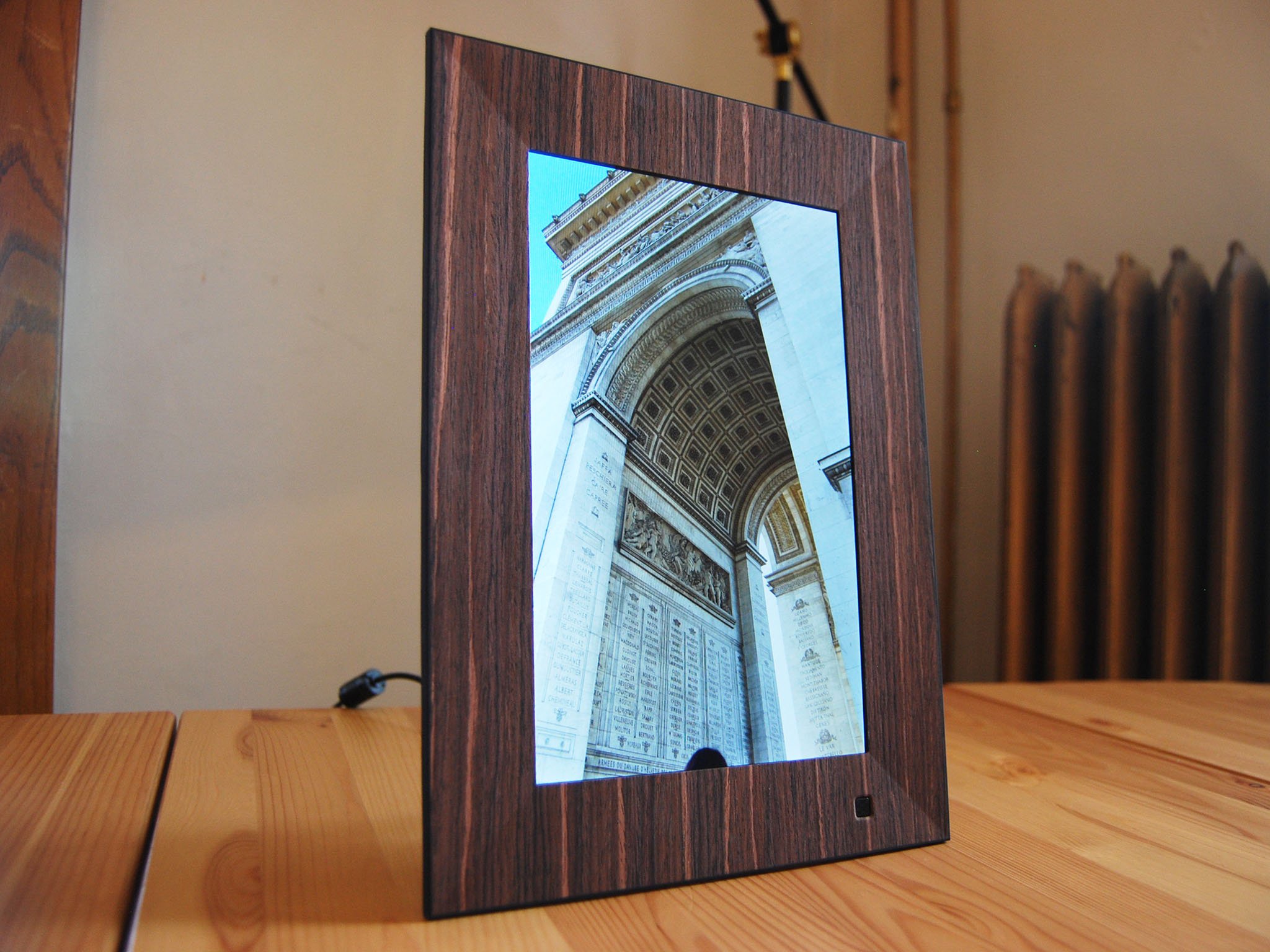
Digital photo frames can generally be identified as such even before seeing the screen backlight or fancy transition, and that modern look that indicates such is preferred by many people. However, if the classic look of a standard photo frame is more to your liking, there is the Nix Lux.
It has a thicker bezel available in a couple of different finishes, and like other Nix frames, it's available in 8-, 10.1-, and 13.3-inch sizes. I have here the midsize option, and I put it through its paces to determine whether or not it's the right choice for you.

Starts at about $150Bottom line: The Nix Lux is a simple digital frame that's fit for a fancy setting, though lack of Wi-Fi connectivity might be the dealbreaker for some.
For
- Rosewood veneer finish.
- Clear, crisp IPS display.
- Basically no setup.
- 8GB thumb drive included.
Against
- No Wi-Fi connectivity.
- 16:10 aspect ratio not for everyone.
What you'll love about the 10.1-inch Nix Lux
Unlike a lot of other digital photo frames, the Nix Lux has a rosewood veneer finish ― there's also a brushed metal option ― on its border to give it a classic look that fits in just about anywhere. At first glance, it's easy to mistake it for any other standard photo frame, at least until you focus in on the stunning picture. The IPS display provides a wide viewing angle, and the 1,200 x 800 resolution looks plenty crisp at this size. The display does seem glossier than others, but it can be cranked up to about 1,000 nits of brightness to negate any errant sunbeams.
| Category | Spec |
|---|---|
| Display size | 10.1-inch IPS widescreen |
| Display resolution | 1,200 x 800 |
| Aspect ratio | 16:10 |
| Internal storage | No |
| Compatible formats | JPG, JPEG, MPEG-4 |
| Wi-Fi | No |
| Speakers | Dual 1.5W stereo |
| Ports | USB-A, SD, SDHC |
| Battery | No |
| Wall-mountable | Bracket sold separately |
| Dimensions | 11.46 in x 8.27 in x 1.39 in (291 mm x 210 mm x 35.2 mm) |
Like the Nixplay Seed that I also reviewed, the rear power cable acts as a flexible kickstand to hold the frame in either portrait or landscape mode. Once you've plugged it in ― it requires a constant source of power ― there's basically no setup at all. The frame powers on, asks you to insert an SD card or a USB thumb drive, and from there it's easy sailing. No app to sync, no Wi-Fi to connect, and not even a clock to set, though you can set it and choose to display it at all times if you wish.
All compatible files on the removable storage can be played at once, or you can choose to play only photos or only videos. There's likewise a browser where you can choose a single file to display. The frame, by default, plays images in a slideshow, and there are plenty of settings to tweak, including transition, timing, and order. If the picture doesn't quite look right, you can likewise adjust contrast, saturation, and hue until you're content. The Lux reads removable storage quickly, and there's hardly any time between plugging in a thumb drive or SD card and accessing a folder containing more than 1,000 high-res photos.
The back of the Nix Lux has a bit more mass than the Nixplay Seed in order to compensate for the card readers and small control set (in case you misplace the included remote control), but still not enough to bar you from hanging the frame on a wall with an optional mounting bracket (about $20).
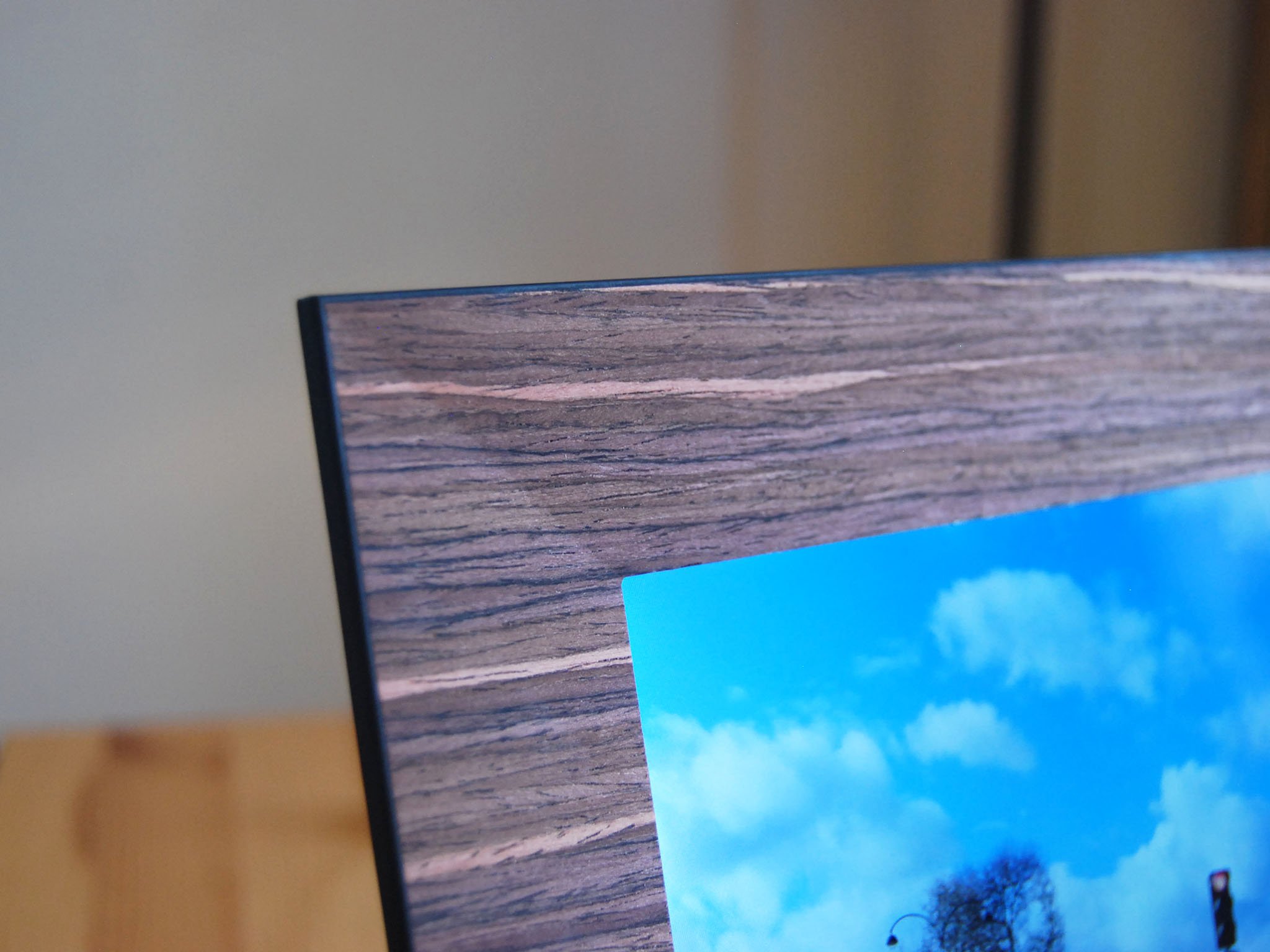
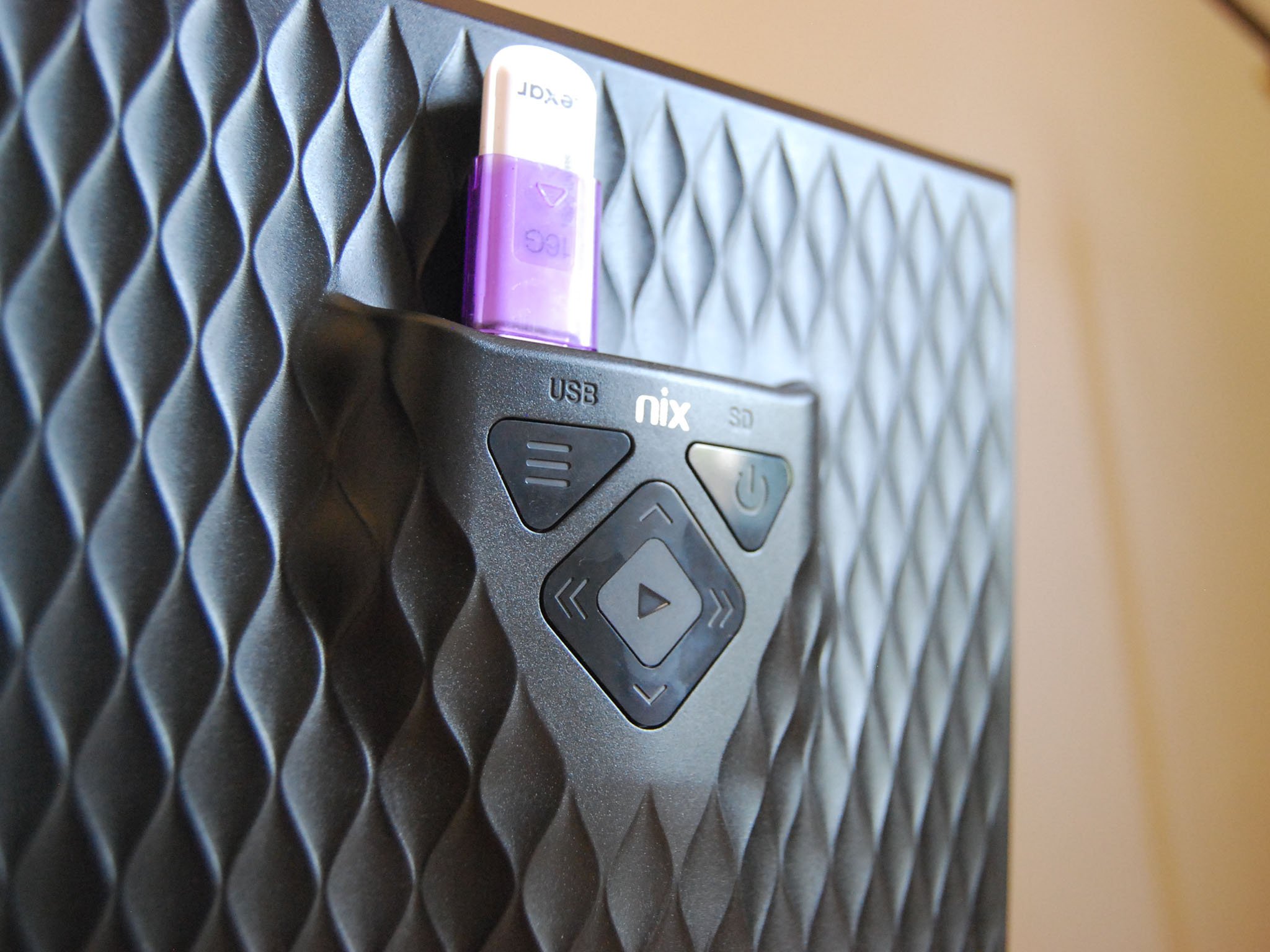
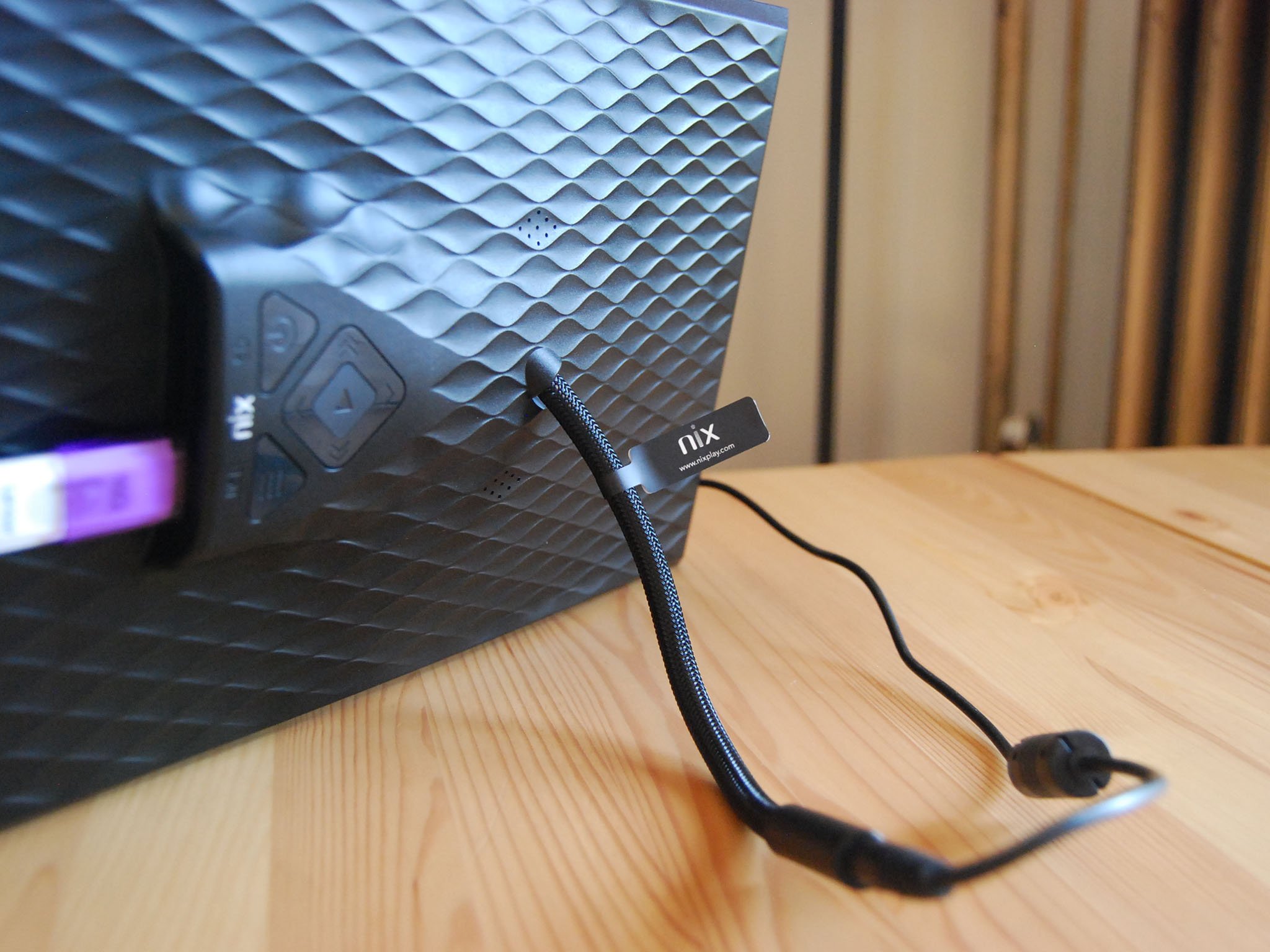
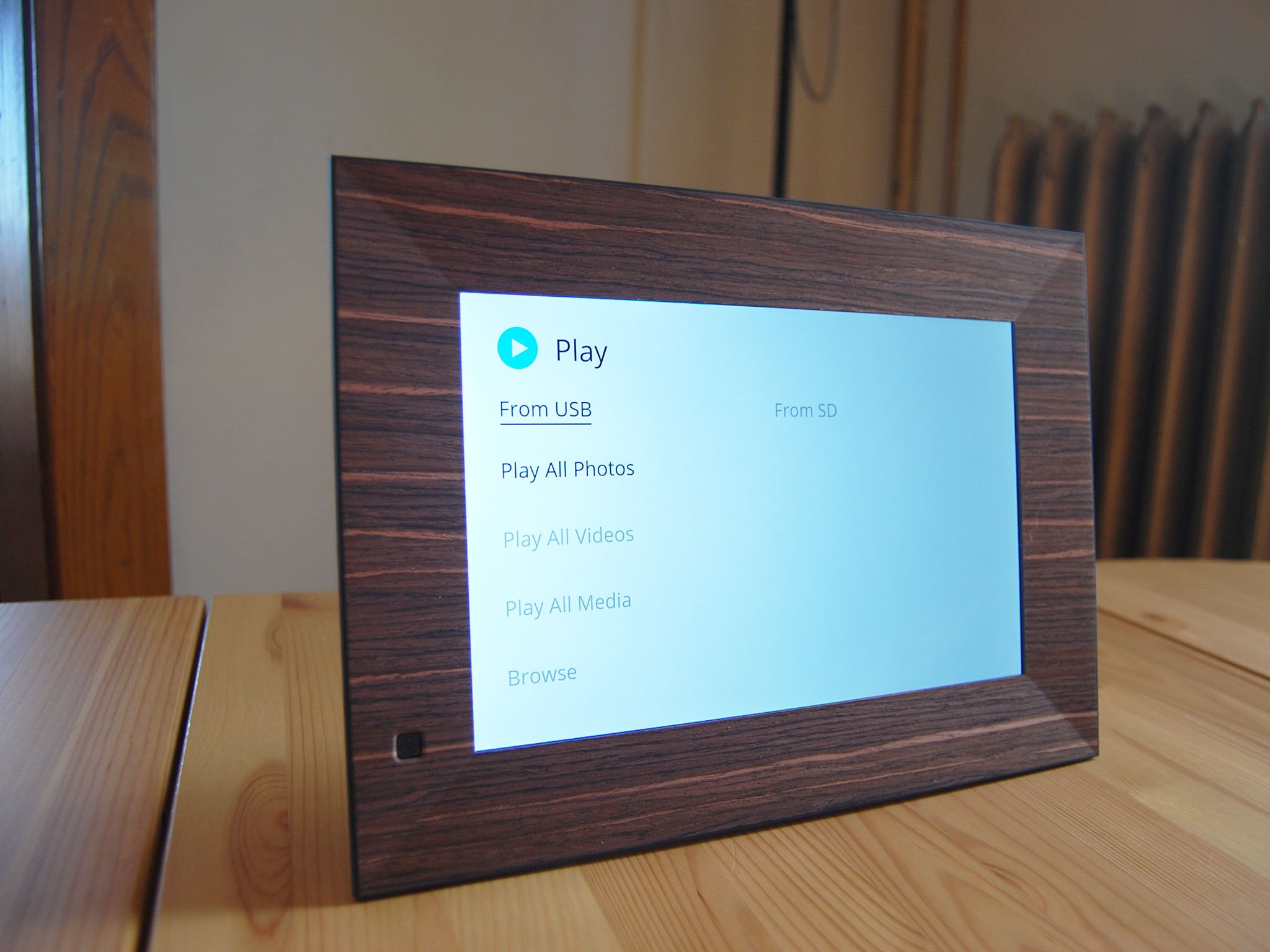
What you'll hate about the 10.1-inch Nix Lux
There's something to be said about the simplicity of the Nix Lux ― it reads from whatever you plug into it, and that's it ― though being unable to quickly create playlists on the go or quickly add photos to the frame over Wi-Fi might be an annoyance. If you take a photo on your phone, for example, it must be transferred to removable storage and then plugged into the frame. Likewise, slideshows and playlists must be created on the removable storage before plugging it into the frame. The Lux doesn't have any internal storage, though it did come with a complimentary (and miniature) 8GB thumb drive to get you started. As for reading removable storage, there doesn't seem to be a way to pull images from both a USB drive and SD card at the same time.
This 10.1-inch model I tested has a 16:10 aspect ratio, which doesn't exactly work well with my DSLR or phone photos. By default, there are black bars around them in both portrait and landscape modes. You can choose the "Fill" option to get rid of the black bars, though you do lose a bit of picture around the edges. If your media is mostly shot in 4:3, the eight-inch Nix Lux is no doubt a more suitable option.

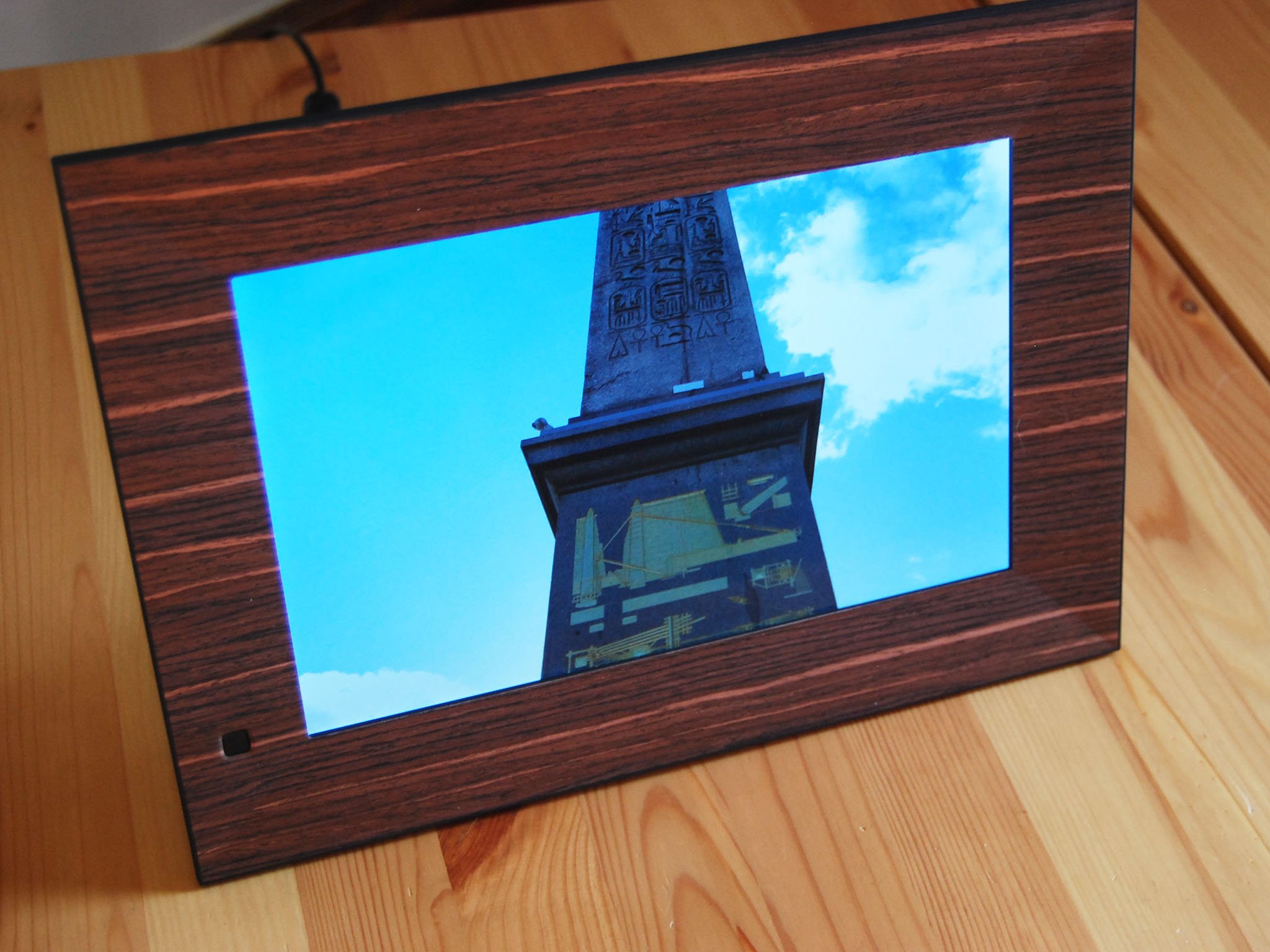
Nix Lux bottom line
The Nix Lux seems to be positioned as a classy frame for those less tech-savvy people, or for those tech-savvy people who'd rather not have another app and Wi-Fi connected device in their home. It would make a great gift ― especially with the 8GB thumb drive already loaded with favorite images ― that's pretty much foolproof once it's running, but there is also a decent collection of settings to get the picture just right.
Considering it can play videos and photos in the same slideshow, there's not even the need to choose one or the other, and I can foresee this frame doing its thing day in and day out without any need for attention. And isn't that what a photo frame has always been about?
If you're not worried about taking a couple of extra steps to collect all your photos onto one piece of removable storage, and if you're not worried about creating your own slideshows before dealing with the frame, the Nix Lux will make a great addition to your or a loved one's living room.

Cale Hunt brings to Windows Central more than eight years of experience writing about laptops, PCs, accessories, games, and beyond. If it runs Windows or in some way complements the hardware, there’s a good chance he knows about it, has written about it, or is already busy testing it.
